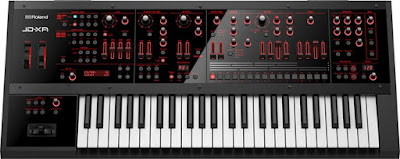- A synthesizer is an electronic keyboard that can generate or copy virtually any kind of sound, making it able to mimic the sound of a traditional instrument, such as a violin or piano, or create brand new, undreamed of sounds like the crunch of footsteps on the surface of Mars or the noise blood cells make when they tumble through our veins.
- "Synthesize" means to make something new, often by putting it together from existing pieces. So we can think of a synthesizer as an electronic gadget that makes new sounds by piecing together "old" ones.
What makes one instrument sound different from another?
- When two instruments play exactly the same musical note, at roughly the same volume, they can sound completely different.
- If we play a pure musical note with a tuning fork, the oscilloscope shows an undulating hilly pattern called a sine wave.
- But if we play the same note with a trumpet, the wave will look more zig-zagged, like the teeth of a saw (it's usually called a saw-tooth wave).
- If we play the same note again on a flute, we will see triangular waves, while a clarinet, blown hard, playing exactly the same note, might well give us square waves.
- The shape of the sound waves , which is controlled by how the instrument pumps energy into the world around it.
- In other words, how it vibrates and makes the air around or inside it vibrate in sympathy is one of the things that makes instruments sound different from one another.
- You can hear the difference between sine waves, square waves, and sawtooth waves in this little sound clip. In each case, we're hearing a note with exactly the same frequency (440 Hz):
How Synthesizer Works?
- Generate sound waves of different shapes.
- Generate more than one sound tone at once to produce a fundamental frequency and harmonics.
- Make the volume of the sound change over time to produce different ADSR envelope shapes.
Examples:
1.Basic Harmonics:
2.Adding a wah-wah effect:1.Basic Harmonics:
- In my first attempt at synthesizing a sound, I've added together three square waves of 110 Hz (top), 220 Hz (middle), and 440 Hz (bottom).
- Then I've faded in the sound at the start (giving a slowly rising attack) and faded it out at the end (giving an even more gradual release), so there's no decay or sustain.
- That gives me these three fish-shaped envelopes, which are added together in the final sound, the three tones play simultaneously, but our ears add them together so we hear a single, fused sound about 0.5 seconds long.
- The result sounds fairly harsh not something I'd particularly want to listen to
- Next, I've taken the same three waves and applied a wah-wah effect, which wobbles the amplitude up and down to resemble a human voice.
- Notice how this changes the envelopes of the waveforms without changing the frequencies of the sounds.
- The higher frequency sounds are changed more than the lower frequency sound.
- It sounds much less abrasive and a bit more interesting. With more work, we could get this quite close to a human vowel sound.
- For my final example, I've reduced the amplitude of the middle tone by about 50 percent.
- Removed the lowest tone entirely, and replaced it with white noise that attacks and decays in roughly the same time period.
- Here's what it sounds like more windy and whistle-like, but still recognizably the same note (frequency).






